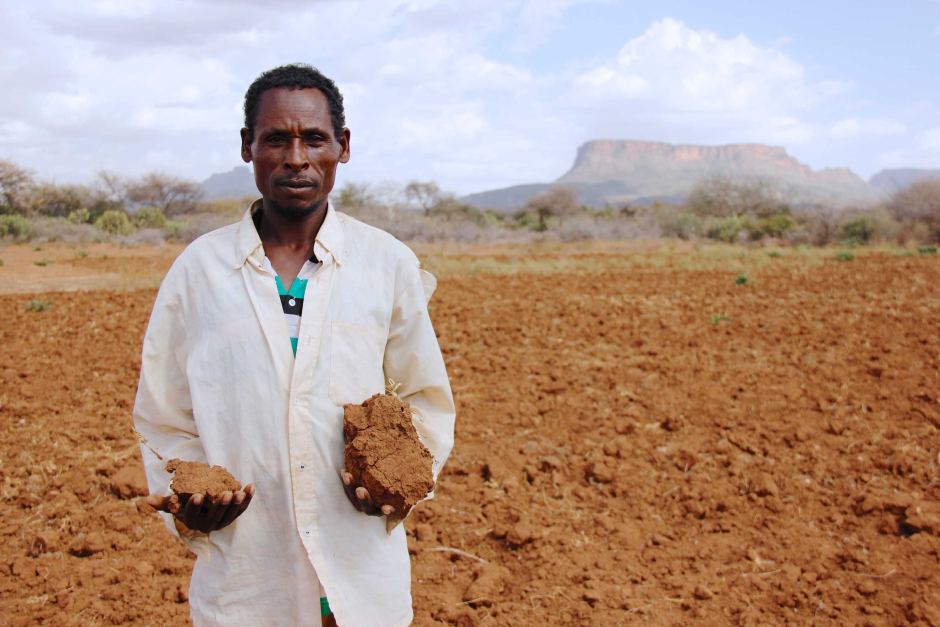Climate adaptation and mitigation
Climate change threatens to reduce global crop production, and poor people in tropical environments will be hit the hardest. More than 90% of CIMMYT’s work relates to climate change, helping farmers adapt to shocks while producing more food, and reduce emissions where possible. Innovations include new maize and wheat varieties that withstand drought, heat and pests; conservation agriculture; farming methods that save water and reduce the need for fertilizer; climate information services; and index-based insurance for farmers whose crops are damaged by bad weather. CIMMYT is an important contributor to the CGIAR Research Program on Climate Change, Agriculture and Food Security.
Cereal systems in South Asia show diverse benefits of conservation agriculture
 Capacity development
Capacity development
Conservation agriculture practices are climate-smart, helping farmers adapt to climate change while minimizing greenhouse gas emissions, researchers say.
Scientists aim to adapt wheat to a warmer climate with less water
 Climate adaptation and mitigation
Climate adaptation and mitigation
Scientists battling to increase wheat production by more than 60 percent over the next 35 years to meet projected demand are optimistic that they have begun to unravel some genetic mysteries.
The legacy of drought tolerant maize for Africa
 Climate adaptation and mitigation
Climate adaptation and mitigation
The Drought Tolerant Maize for Africa project has contributed towards improving the seed system in sub-Saharan Africa in the face of extreme drought.
Drought tolerant maize: Long-run science, investments, and partnerships pay off in Africa
 Climate adaptation and mitigation
Climate adaptation and mitigation
Before climate change became a hot topic, the U.N. Development Programme provided funding for a team of scientists in Mexico to find a better way to breed resilient maize for farmers in drought-prone tropical areas.
Amidst intense drought, investment in scientific research is key
 Climate adaptation and mitigation
Climate adaptation and mitigation
El Niño drought-related stress is triggering hunger and food insecurity. Investment in scientific research is key to combating such events.
NAAS fellow M.L. Jat talks climate change, sustainable agriculture
 Climate adaptation and mitigation
Climate adaptation and mitigation
Senior Scientist M.L. Jat has received India’s National Academy of Agricultural Sciences fellowship in Natural Resource Management for his “outstanding contributions in developing and scaling” conservation agriculture-based management technologies.
Can maize help farmers in Odisha, India, cope with climate change?
 Climate adaptation and mitigation
Climate adaptation and mitigation
Increasing drought and low rainfall are leading many rice farmers in India’s plateau region of Odisha to start cultivating a crop that requires less water, has lower input costs and earns farmers greater profit – maize.
Mobilizing gene bank biodiversity in the fight against climate change
 Climate adaptation and mitigation
Climate adaptation and mitigation
CIMMYT’s germplasm bank holds untapped genetic information that could lead to climate resilient wheat varieties, according to a new study.
Climate change’s surprising opportunity for East African maize farmers
 Climate adaptation and mitigation
Climate adaptation and mitigation
With the right varieties, future maize yields in East Africa’s highlands could soar as temperatures increase.
Modeling Africa’s agricultural future
 Capacity development
Capacity development
CIMMYT held its second training workshop on “Crop Modeling under Uncertain Climate,” from 7-11 December 2015 in Addis Ababa, Ethiopia.
Is the next food crisis coming? Are we ready to respond?
 Climate adaptation and mitigation
Climate adaptation and mitigation
One of the strongest El Niños on record is underway, threatening millions of agricultural livelihoods – and lives.
Wheat scientists eye USDA $3.4 million in new funds to boost yields
 Climate adaptation and mitigation
Climate adaptation and mitigation
Scientists involved in a major global initiative aimed at increasing wheat yields as much as 60 percent by 2050 get a boost from U.S. government announcement of new research funds.
Balancing economy and ecology: agriculture vs. nature
 Climate adaptation and mitigation
Climate adaptation and mitigation
Reconciliation of the right to develop and environmental protection must move beyond global dialogue and be put into practice.

